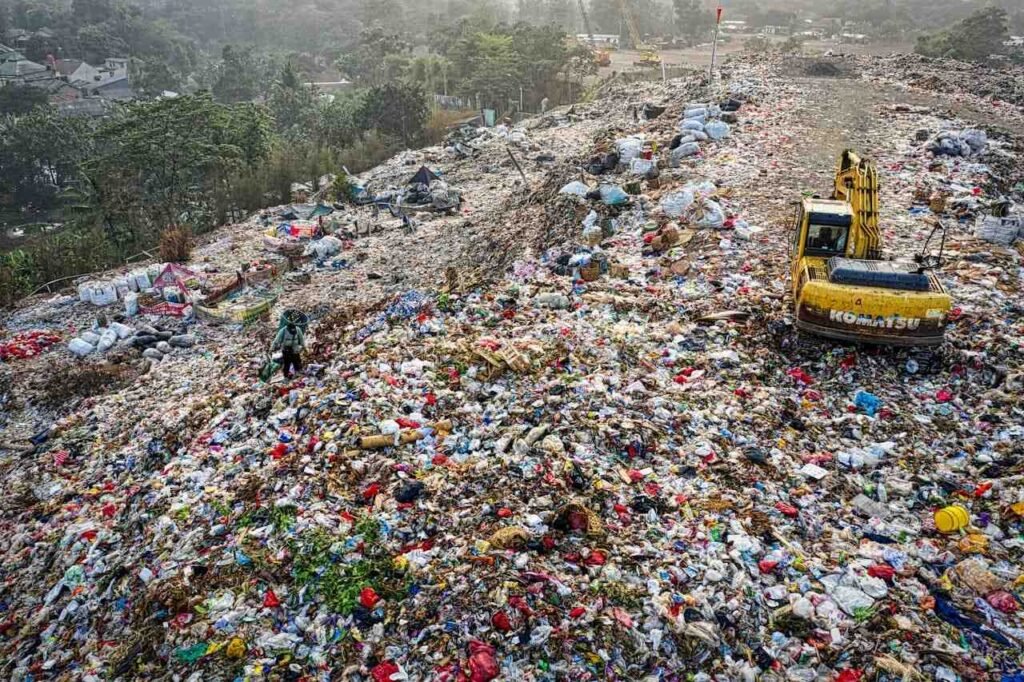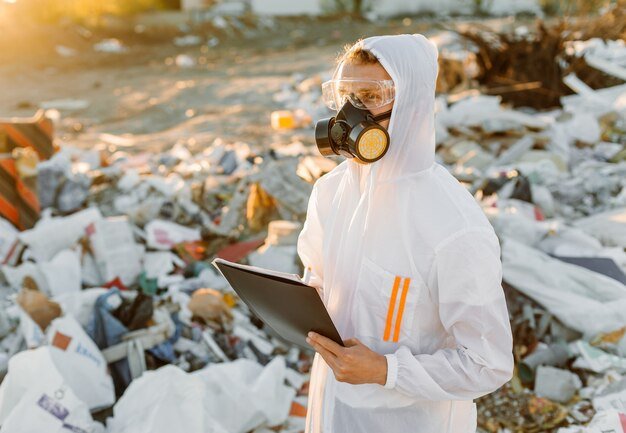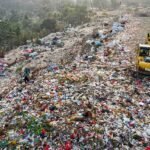Plastic Overshoot Day 2025 — a Warning and a Roadmap for Countries
Plastic Overshoot Day arrived on 5 September 2025. It is the moment in the year when humanity, globally, has produced more plastic waste than can be safely managed — and from that day forward, every extra kilogram of plastic is likely to become pollution. According to Plastic Overshoot Day 2025, this date falls earlier each year as production and mismanagement rise, and the 2025 report estimates that roughly a third of the plastic produced will be mismanaged and at high risk of entering rivers, soils and oceans.
The numbers matter because they describe not only an environmental problem but also a policy gap. The same 2025 analyses estimate global plastic waste at about 225 million tonnes for the year, with mismanagement rates that translate into tens of millions of tonnes of plastic likely to pollute ecosystems unless countries act very differently. According to LetsRecycle and the Earth Action analysis, global waste and leakage continue to climb.

The Numbers, the People and Where the Plastic Comes From
Most of the plastic that overwhelms waste systems comes from a few predictable places: short-lived packaging, household items and fast-moving textile products. The Plastic Overshoot Day analysis shows packaging alone accounts for about a third of the material flows driving the problem — a design and consumption problem as much as an end-of-pipe problem. According to Plastic Overshoot Day’s 2025 analysis, packaging represented roughly 33% of the plastic considered in the report.
Those averages hide very different national realities. The Plastic Overshoot Day project divides countries into five archetypes — the Overloaders, the Transactors, the Moderate Polluters, the Toxic Waste Producers and the Self-Sustainers — so that policy responses can be tailored to each profile. For example, “Transactors” are high-consumption, high-income nations that tend to manage most of their waste but still export and import large quantities of packaging waste; “Toxic Waste Producers” are high producers with poor management and heavy mismanagement and leakage. The archetype approach reframes the problem: it is rarely only a technology gap; it is often a mix of consumption patterns, trade in waste, and inadequate local infrastructure.
Behind the numbers are people whose livelihoods and health are already entangled with plastic flows. Informal waste collectors — the “waste pickers” and river fishermen who collect litter — are the frontline fixers in many places. Reuters reporting from Brazil highlights how tens of thousands of informal workers collect the lion’s share of recyclable material, often for very low pay, and how pilot projects that pay fair wages can improve both incomes and environmental outcomes. “Waste pickers have been described as the ‘hidden heroes’ in the drive to tackle the global plastic pollution epidemic,” notes Reuters. Those human stories show that fairer systems that include and compensate informal workers can raise recycling rates and cut leakage.
What the New Country Archetypes Make Clear — and the Examples That Test Them
The archetypes introduced in the Plastic Overshoot Day report are practical: they force policymakers to match solutions to country realities instead of applying one-size-fits-all policies. That matters because we already have proof that certain mixes of policy, culture and investment can shift outcomes.
Rwanda is a clear real-world example often cited in policy debates. The country moved early, banning single-use plastic bags and then broadening restrictions and enforcement. The ban, introduced in 2008 and backed by active public engagement (called Umuganda or community clean-ups), has helped keep public spaces cleaner and lowered visible plastic litter — a lesson in how law, public mobilisation and enforcement can change behaviour. According to Uppsala University research and World Bank case summaries on Rwanda, the ban and community systems are credited with tangible local results.
But Rwanda’s success is not a simple template for wealthier, high-consumption nations. The “Transactors” — wealthy countries that both import and export waste — show that technical capacity to treat and sort waste does not solve overconsumption or complex cross-border flows. OECD analysis for 2025 shows policy scenarios where a “high-stringency” package of measures (stronger reuse mandates, extended producer responsibility, better collection and targeted investments) can cut mismanaged waste dramatically. The OECD’s Secretary-General, Mathias Cormann, put the trade-off plainly: with stronger co-operation and targeted investments, the region (Southeast and East Asia in the OECD example) “can almost completely eliminate plastic leakage by 2050” — but the policy package requires political will and finance, and uneven costs across countries.
Brazil shows another essential lesson: informal systems and social innovation matter. The Reuters’ reporting from Brazil documents community and technology projects (like “Fishing for Litter” and Green Mining) that integrate informal collectors into formal value chains, improving incomes and traceability while capturing large volumes of plastic for recycling. Those programs demonstrate two truths: first, that local social systems are crucial for raising collection rates; second, that private–public piloting can scale only when governments and markets provide predictable demand for recycled materials.
Finally, the global policy picture is changing. According to Le Monde, negotiations toward an international plastics treaty have highlighted a central tension: whether to target production as well as pollution. Recent reporting around UN discussions (including a “Nice Call for an Ambitious Treaty” and failed rounds in Geneva) shows many countries and civil-society groups pushing for production-level limits while some major oil-producing nations resist binding production caps. That politics matters to the archetypes: Overloaders and Toxic Waste Producers will not improve their domestic Overshoot Day without global rules that alter feedstock incentives.
From Data to Action — Concrete Policies Countries Can Use Now
The archetypes are most useful when matched to proven policy packages. Three practical, evidence-backed pathways emerge from the combined literature and reporting:
First, cut the flow at the top: design and demand. Policies that reduce single-use packaging and require reuse or refill systems (deposit-return schemes, reusable packaging mandates for retail chains, minimum recycled content rules) directly shrink the volumes that demand treatment. Systemic reviews like “Breaking the Plastic Wave” have shown that no single measure will do it alone — a combination of design changes, reuse systems, and scaled recycling is needed. A 2020 modelling study by The Pew Charitable Trusts and SYSTEMIQ showed that integrated strategies could cut flows to the ocean by roughly 80% in two decades if implemented ambitiously.
Second, close the loop: invest in collection, fair value for collectors, and industrial demand for recyclate. The OECD analysis and multiple country briefs make clear that investment in basic solid-waste management is not optional — it is a fiscal and development priority. The OECD’s Regional Plastics Outlook shows that a high-stringency policy package can reduce mismanaged waste dramatically and increase recycling rates fourfold in some regions — but it also estimates large investment needs and uneven short-term GDP effects for lower-income countries, highlighting the case for international finance and technology transfer.
Third, protect livelihoods and formalise the informal sector. Real-world projects from Brazil to Indonesia show that formally recognising and paying waste collectors — and integrating them into reverse-logistics systems — produces immediate social and environmental wins. The Reuters report documented initiatives that guaranteed living wages and traceability and improved both local environments and incomes. Any national plan that ignores the millions who today collect and sort plastics risks leaving them behind and losing a practical route to higher collection rates.
Countries in different archetypes will prioritise those levers differently. Overloaders must combine demand reduction with smarter trade rules on waste exports. Toxic Waste Producers need urgent investment in basic collection and bans on hazardous waste flows. Transactors should target circular industry incentives and stricter controls on cross-border waste trade to avoid offshoring the problem. Moderate Polluters and Self-Sustainers can focus on targeted infrastructure, improved product design and community engagement to prevent backsliding.

Actionable Next Steps for Policymakers
Start by measuring. Every credible plan begins with a clear national baseline: how much plastic is consumed by sector, how much waste is collected, which items leak most. The Plastic Overshoot Day methodology offers a country-level way to see where your date falls and which archetype you resemble.
Design mandates that remove the worst items first — single-use films, light-weight packaging and non-recyclable composites — and pair those mandates with substitute markets and support for small businesses. Use extended-producer-responsibility (EPR) schemes to shift costs back to manufacturers, but design EPR to reward reuse and verified collection that includes informal workers. OECD scenario work shows EPR combined with reuse mandates is highly effective when carefully implemented.
Invest in the workforce that already collects plastic. Fund hubs, guarantee fair prices or minimum wages for collectors (as pilot programs in Brazil have done), and improve traceability systems so companies can show responsibility and pay for environmental services. The Reuters reporting shows initiatives that raised incomes and collection volumes where collectors were integrated and paid fairly.
Finally, cooperate across borders. Where trade in waste is large — as in many Transactor countries — agreements to restrict exports of low-value, hard-to-recycle waste and to provide finance and technical support to recipient countries will reduce the global mismanagement burden. According to AP News, recent UN treaty debates make clear that global rules on production and trade will shape whether national action is enough.
Conclusion
Plastic Overshoot Day is, bluntly, a political mirror. It tells countries whether current systems will keep plastic contained, and which day in the calendar marks the fall into likely pollution. The archetypes give a more useful next step than despair: they show which levers are most effective in each national situation. The evidence — from OECD modelling to Systemiq’s pathway work and to reporting on frontline projects — points to a common truth: success needs blended solutions (design, demand, collection and social inclusion) and sustained political and financial commitment.







